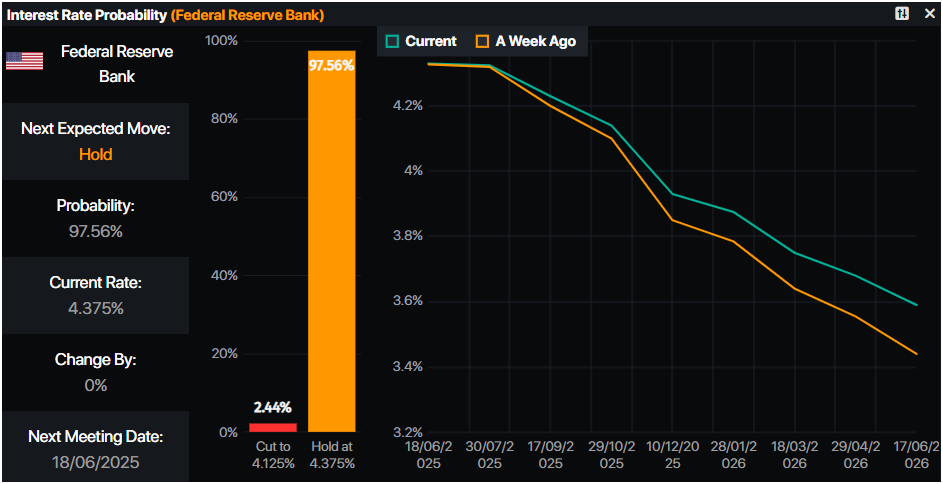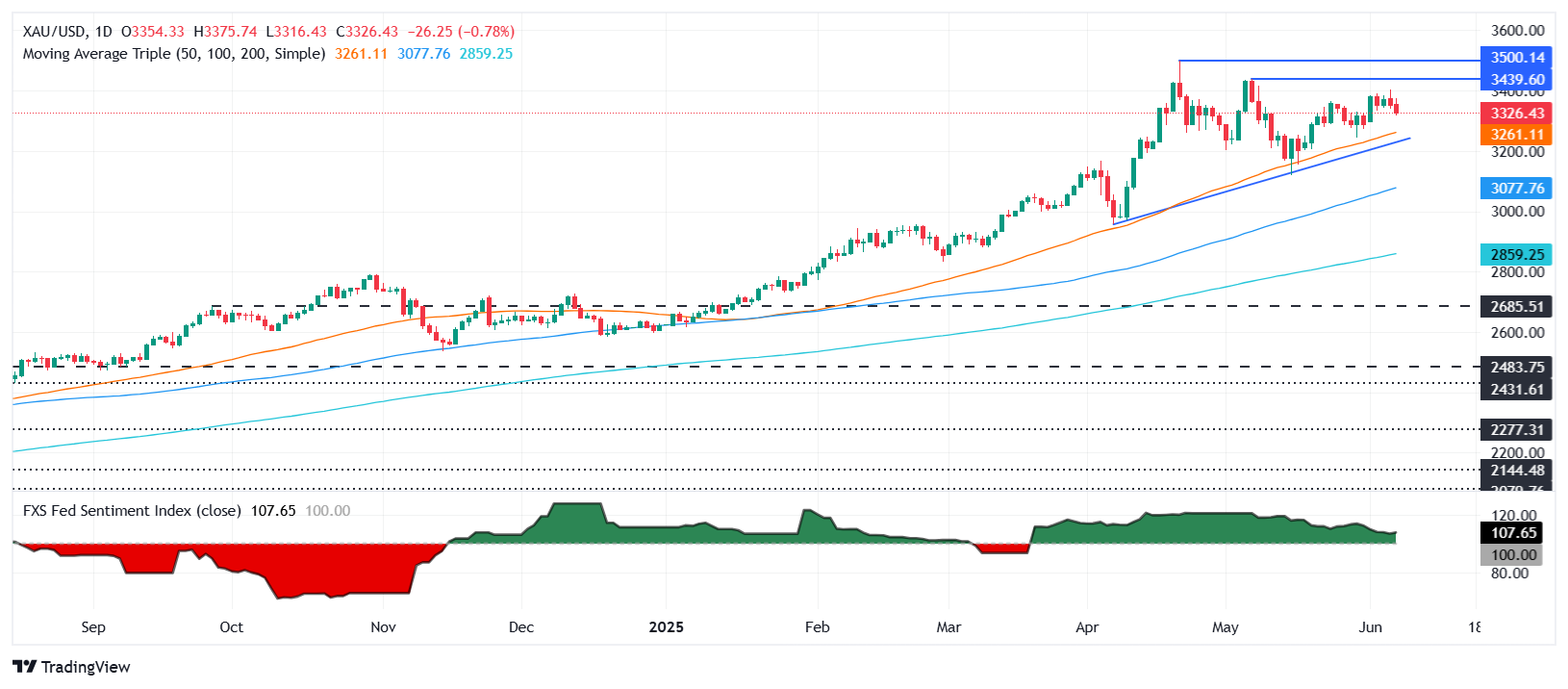Gold sinks on solid US jobs report but clings to weekly gains

- XAU/USD falls after strong NFP data cuts rate cut hopes, but holds weekly gain above 1.30%.
- US adds 139K jobs in May; Unemployment Rate steady at 4.2%, boosting US Dollar and Treasury yields.
- Fed cut expectations fade as traders reassess outlook ahead of June 17–18 FOMC meeting.
Gold price extended its losses for the second consecutive day on Friday but is poised to finish the week with gains of over 1.30% after the latest Nonfarm Payrolls report in the United States (US) was solid, pressuring traders to trim their bets that the
XAU/USD technical outlook: Gold remains bullish despite losing some ground below $3,360
Gold price consolidates after the XAU/USD has fallen to a four-day low of $3,316 but holds above $3,300, which is seen as a crucial floor that, if cleared, could open the path to test $3,250.
The Relative Strength Index (RSI) shifted bearish, indicating that XAU/USD could extend its losses; however, the overall trend favors the bulls.
If Gold stays above $3,300, this could pave the way to test the current week’s peak of $3,403 hit on June 5, followed by the $3,450 mark. If surpassed, up next lies the all-time high at $3,500.
On the other hand, if Gold falls below $3,300, sellers could send XAU/USD on a tailspin, testing the 50-day Simple Moving Average (SMA) at $3,235, followed by the April 3 high, which has since turned into support at $3,167.

Fed FAQs
Monetary policy in the US is shaped by the Federal Reserve (Fed). The Fed has two mandates: to achieve price stability and foster full employment. Its primary tool to achieve these goals is by adjusting interest rates.
When prices are rising too quickly and inflation is above the Fed’s 2% target, it raises interest rates, increasing borrowing costs throughout the economy. This results in a stronger US Dollar (USD) as it makes the US a more attractive place for international investors to park their money.
When inflation falls below 2% or the Unemployment Rate is too high, the Fed may lower interest rates to encourage borrowing, which weighs on the Greenback.
The Federal Reserve (Fed) holds eight policy meetings a year, where the Federal Open Market Committee (FOMC) assesses economic conditions and makes monetary policy decisions.
The FOMC is attended by twelve Fed officials – the seven members of the Board of Governors, the president of the Federal Reserve Bank of New York, and four of the remaining eleven regional Reserve Bank presidents, who serve one-year terms on a rotating basis.
In extreme situations, the Federal Reserve may resort to a policy named Quantitative Easing (QE). QE is the process by which the Fed substantially increases the flow of credit in a stuck financial system.
It is a non-standard policy measure used during crises or when inflation is extremely low. It was the Fed’s weapon of choice during the Great Financial Crisis in 2008. It involves the Fed printing more Dollars and using them to buy high grade bonds from financial institutions. QE usually weakens the US Dollar.
Quantitative tightening (QT) is the reverse process of QE, whereby the Federal Reserve stops buying bonds from financial institutions and does not reinvest the principal from the bonds it holds maturing, to purchase new bonds. It is usually positive for the value of the US Dollar.
